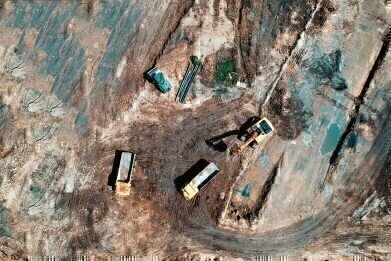Fuel for thought
How is the Oil Price Crash Affecting Oil Sand Companies?
May 09 2015
Over the last couple of years, the price of oil has taken a global dive. The proliferation of the practice of fracking (especially in the US), unrest among members of oil syndicate OPEC and a general fall in demand has led to significantly decreased prices. Indeed, in just six short months, oil prices have fallen from $115 per barrel in June 2014 to a worldwide low of just $45 in January 2015.
For more information on why this massive drop in price has occurred, see the article: Why Are Oil Prices Dropping? Though this has led to cheaper gas and petrol prices for the common man, making it easier to refill our car fuel tanks, it has had a disastrous effect on another industry – oil sand companies.
What are Oil Sands?
Oil sands are an unconventional method of producing oil that is mostly seen as a marginal source. This means that oil sand companies are called upon to supply an additional barrel of oil at short notice. Along with the US production of tight oil, oil sand companies are the frontrunners in marginal oil production. To learn more about this topic, please read this article: What is Unconventional Oil?
Oil sands differ from traditional crude oil in that the deposits are buried among unconsolidated sandstone. This makes their extraction incredibly difficult and often far more costly than traditional oil-extraction practices. Even after extraction, the density and viscosity of the majority of oil sands can pose headaches in terms of transportation and refinement.
There are heavy oil sand deposits around the globe. However, the two largest known locations are in Venezuela and Canada. Of the two, the latter is far more developed and is the frontrunner in oil sand production.
How Are Oil Sands Affected By Crude Oil Prices?
Since oil sand extraction is more costly than traditional methods, they must rely on high prices to make a profit. This means that they must also rely on crude oil maintaining a high price, since they need to stay competitive to remain sought-after. Current drops in prices have made this far more difficult for them than previously.
In fact, several major investors in the business have been pulling out of the industry in recent months, with the largest Chinese oil major by market value PetroChina being the most recent. This spells bad news for the oil sand industry. Since they require crude oil barrels to retail above $60 (or even as high as $90, depending on individual company extraction methods), the current stagnation around $50 per barrel could mean real danger for many companies.
Those most at risk are ones which have recently started up, have yet to produce or are still attempting to raise capital. More established companies who already have long-term investment plans in place should be able to survive on the strength of their pre-existing deals, until an upturn in oil prices happens.
Whether or not this upturn will occur in the near future is a matter for debate. However, fears over the environmental dangers of fracking, a higher focus on renewables and the generally-dwindling supplies of oil in the Earth mean that eventually, prices are sure to rise again. It remains to be seen whether fledgling oil sand companies will be able to wait it out until this rise happens... only time will tell.
Digital Edition
PIN 25.6 Buyers' Guide
January 2025
Buyers' Guide Directory - Product Listings by Category - Suppliers Listings (A-Z) Articles Analytical Instrumentation - ASTM D7042: The Quantum Leap in Viscosity Testing Technology -...
View all digital editions
Events
Jan 20 2025 San Diego, CA, USA
Jan 22 2025 Tokyo, Japan
Jan 25 2025 San Diego, CA, USA
SPE Hydraulic Fracturing Technology Conference and Exhibition
Feb 04 2025 The Woodlands, TX, USA
Feb 05 2025 Guangzhou, China



















